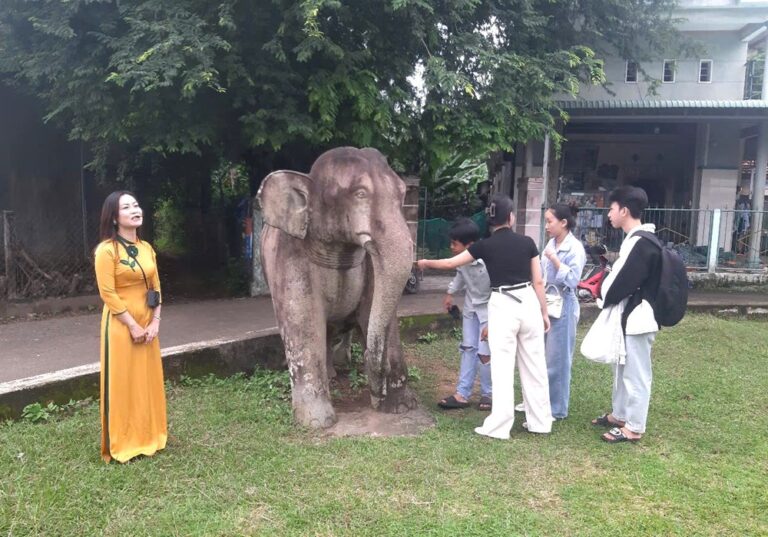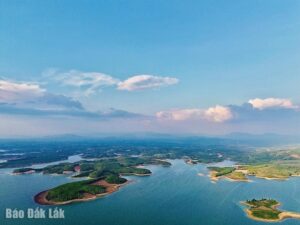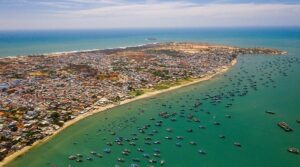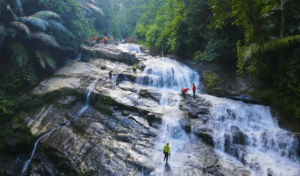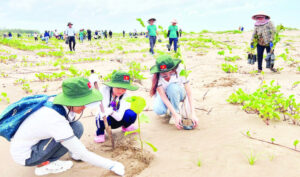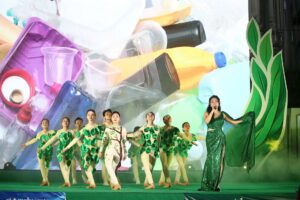Located at the northeastern most point of Vietnam nearly 300km from Hanoi, Tra Co in Quang Ninh Province is one of the country’s most charming beaches.
The name “Tra Co” is the combination of two villages – Tra Phuong and Co Trai in Do Son (Hai Phong), where migrants came to settle nearly 600 years ago. Tra Co Island was once 100 metres from the mainland. In 1952 the French built a small rock path connecting the two sides and, in 1954, the local authorities upgraded it into a road, which has remained the main link between the island and the mainland ever since.
Tra Co Beach is widely known as the first beach on the country’s map, the longest beach (17km) in the country, and Vietnam's most pristine and romantic beach.
Tra Co’s beauty is due to many natural features such as Con Mang (Mang Islet), as well as historical and cultural monuments such as the Tra Co Communal House, Linh Khanh and Xuan Lan pagodas, and Tra Co Catholic Church.
The Tra Co Communal House, built about 500 years ago, is the area's most important cultural relic. It still retains its original architectural style and sculptures. It has seven large rooms with lacquered doors and carvings of dragons, clams, and snails. The people of Tra Co come here to honour the first six settlers who founded the village, as well as Quan He (Nguyen Huu Cau), the leader of a peasant uprising during the Le-Trinh dynasty. In 1974, it was formally recognised as a National Architectural Vestige by the Ministry of Culture and Information.
Tra Co has an abundance of fish so visitors can enjoy several local specialties made from cuttlefish, crab, shrimp, oysters and squid. The best known local dishes are made from king crabs.
Tra Co Beach is considered the most romantic beach in Vietnam with its wide stretches of smooth white sand and deep blue sea all the year round.
Next to Tra Co Beach is the beautiful Con Mang sand-band, about 5km from Mong Cai. The sand here is smooth and firm and you can easily ride a motorbike on it without being afraid of sinking or slipping. You can also enjoy the beautiful view at sunrise or sunset.
If you come to Tra Co at the end of the fifth lunar month or the beginning of the sixth lunar month, you can attend the village festival. During the festival, a boat sails from Tra Co to Do Son in Hai Phong on May 25th and returns to Tra Co on the 30th. The 1st of the sixth lunar month is the “King Paddling to the Sea" Festival that includes a solemn ceremony in which villagers stage a display of arms, weapons and flags.
Probably the most exciting event of the festival is the fat pig competition when the local people award the fattest pig that has been carefully fed for months before the festival, the title of “Mr. Elephant”. An ancient dance called “mua bong” is performed on the last day of the festival for local people to pray for a happy, prosperous life and an abundant fishing season.
Tra Co remains pristinely beautiful and peaceful in sharp contrast to the urban development in other places around the country.



